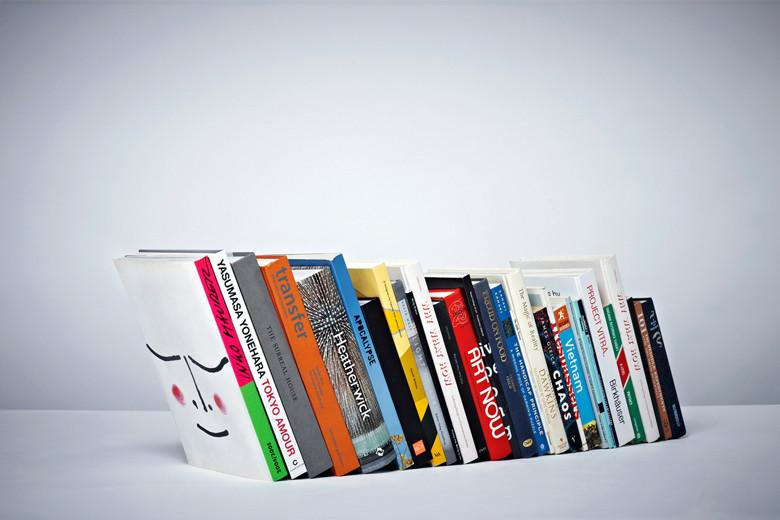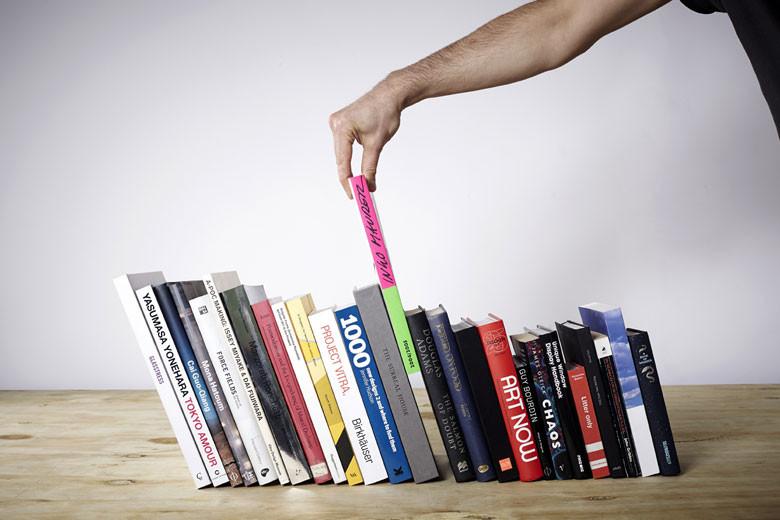Invisible Bookend Lets Your Stacks Defy Gravity

The effect is certainly visually interesting, like a little sleight-of-hand for your shelf, but the story of the sales pitch is where the real mystery unfolds. How does it work? Like a magician, its designer is not telling.
Paul Cocksedge is asking – and perhaps will also end up answering – a larger question of how much we need to know about something before we are willing to offer up our hard-earned money for it.
“The idea is it’s not about the object,” said Cocksedge. “It’s all about the fact there’s not anything interesting about the design, it’s just a great functional object.” Which begs the question: isn’t the mystery itself interesting? The explanation of the trick?
You can count this author, for one, as a (potential) skeptic – though the idea for this invisible bookend does provide good food for thought. After all, we don’t demand to see the inner workings of an iPhone before we buy it, so how much is enough information to make a judgment call?
The obvious guess: a hidden piece of metal lies below the line of books and can be extended to accommodate more, while the last volume in the row is merely a fake that keeps the rest from falling … but perhaps it is not that simple after all.
“Paul Cocksedge Studio was founded in 2004 by Paul Cocksedge and Joana Pinho. With a strong and dedicated team of collaborators, the Studio has won national and international acclaim for its original and innovative design, underpinned by research into the limits of technology, materials and manufacturing processes.”
“The key feature of the Studio’s work, in everything from product design to architectural projects, is a focus on simplicity and imagination in order to create unique people-centred designs. At the core of this focus lies an unrelenting attention to detail, a willingness to question previous assumptions about design, and an eagerness to take on a wide-ranging array of projects.”






